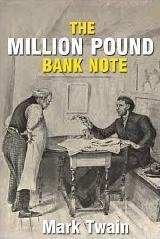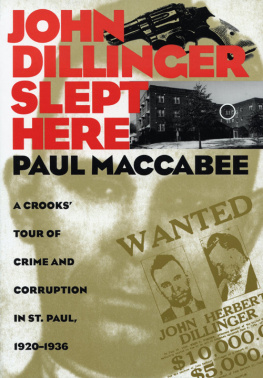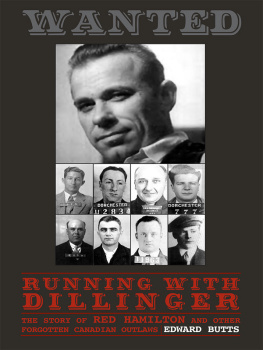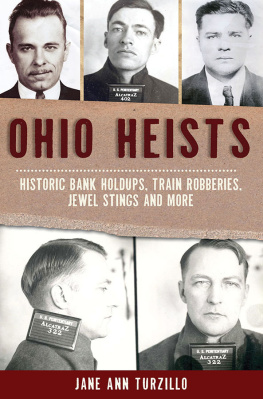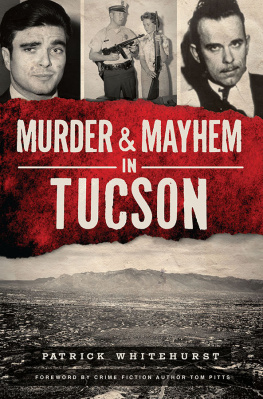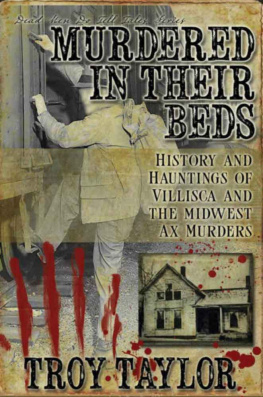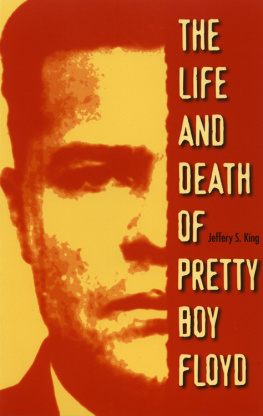PUBLIC ENEMY #1
COLLECTING THE INFAMOUS HISTORY OF
JOHN DILLINGER
An exclusive series
excerpt from
Bank Note Reporter
Mark Hotz
Nearly 20 years ago, I became interested in collecting national bank notes issued by banks that were robbed by the big-time 1930s gangsters. Since then, I have more or less completed a set of these notes, since the subject makes for an interesting hunt and an even more interesting story.
John Dillinger dominated the nations headlines in the 1930s as a notorious and vicious gangster and thief, quickly becoming known by the epithet Public Enemy #1. From June 1933 until July 1934, he and his gang terrorized the Midwest, killing 10 men, wounding seven others, robbing national banks and police arsenals, and staging three jail breaks killing a sheriff during one and wounding two guards in another.
John Herbert Dillinger. The gangsters wit and charisma earned him frequent headlines, media homage, and an infamous story that endures today.
While most readers are probably familiar with John Dillinger, it is important to start with some background information. John Herbert Dillinger was born on June 22, 1903, in the Oak Hill section of Indianapolis, a middle-class residential neighborhood. His father, a hardworking grocer, raised him in an atmosphere of disciplinary extremes, harsh and repressive on some occasions, but generous and permissive on others. In adolescence, he was frequently in trouble. His father, worried that the temptations of the city were corrupting his teenage son, sold his property in Indianapolis and moved his family to a farm near Mooresville, Ind. In 1929, after falling in with pool sharks and petty criminals in Indianapolis, Dillinger was convicted of assault and battery with intent to rob and conspiracy to commit a felony, and received joint sentences of two to 14 years and 10 to 20 years in the Indiana State Prison.
Dillinger embraced the criminal lifestyle behind bars in the Indiana State Prison in Michigan City. He became embittered against society because of his long prison sentence and befriended other criminals who taught Dillinger how to be a successful criminal. The men planned heists that they would commit soon after they were released. Dillinger was paroled on May 10, 1933, after serving four and a half years. It was at this time that he began his bank robbing career.
Dillinger is alleged to have robbed at least a dozen banks in the Midwest and of those, nine were national banks. However, there continues to be some discrepancy as to which banks were actually robbed by Dillinger and his gang, in contrast to banks robbed by other gangsters or by members of Dillingers gang without Dillinger present.
A famous mugshot of John Dillinger. Dillinger staged three jail-breaks over his career, despite increasingly heightened security with each successive arrest.
Dillingers first foray into raiding national banks came at New Carlisle, Ohio, on June 10, 1933, when Dillinger, and two accomplices, William Shaw and Paul Parker, robbed the New Carlisle National Bank (charter #6594) of $10,600. Supposedly, after standing in line like any other customer, and chatting with the local folks, Dillinger told a farmer, You picked a bad day to go to the bank, drew a firearm and went to the head of the line. New Carlisle is a very small town in Clark County, Ohio, located between Springfield and Dayton. The New Carlisle National Bank, however, had a tiny total issue of just $132,000, and the scant one large and three small notes known make it the rarest bank that Dillinger robbed, though it is highly unlikely any of Dillingers take was in national bank notes. I have included a photo of a small note from this bank that was sold by Heritage a few years back for nearly $1,500. Given that this bank is virtually non-collectible, I have not included it in my set.

The New Carlisle National Bank building today. The bank was the first one Dillinger robbed during his illustrious career as a robber and gangster.
A small size note from the New Carlisle National Bank, which Dillinger robbed on June 10, 1933. Because the bank and the loot was so meager, these notes are very rare. This note courtesy of Heritage Auctions.
On August 4, 1933, Dillinger struck again, this time at the First National Bank of Montpelier, Ind. (charter #5278), with the help of partners Harry Copeland and Sam Goldstein. Montpelier is a small town in eastern Indianas Blackford County and its bank was considered rural enough to allow for an easy getaway. The robbery lasted about 10 minutes, netted $10,100, and no shooting was involved. The robbers quietly left town in a blue-green Dodge, driving east on Indiana State Road 18, without being followed.
Notes from the First National Bank of Montpelier are scarce, but available, with approximately a dozen notes reported. I searched for some years for mine, eventually locating it at a Pennsylvania coin show, where it was the only national bank note in a dealers case. Interestingly, the First National Bank of Montpelier went into receivership on October 3, 1933, just two months after the robbery, and perhaps because of it. The old First National Bank building still stands in central Montpelier (see photo; arrow points to the bank). I have also included a photo of my note on this bank. Of the Dillinger-robbed banks, this is the third rarest note to find.
The Montpelier bank went into receivership shortly after Dillinger and his gang robbed the bank. The building still stands in central Montpelier: the arrow in the image points to the bank.
The notes from Dillingers Montpelier, Ind., robbery are the third rarest of the Dillinger notes. Shown here, a note from my personal collection.
Ten days later, on August 14, 1933, these same three men walked into the Citizens National Bank of Bluffton, Ohio (charter #11573) and escaped with roughly $6,000. (There is some discrepancy as to the take some reports indicate it was just $2,100). Bluffton, Ohio, is located along Interstate 75 roughly halfway between Lima and Findlay in Ohios Allen County. The Citizens National Bank was organized in 1920 and succeeded the First National Bank of Bluffton (charter #5626) which was liquidated in late 1919. It is still in business today under the same name. Its total issue was $265,000, all of which was in $5 bills. Though 16 notes are currently reported, six of them are from one uncut sheet. Surprisingly, notes from this bank are very hard to find; I searched many years for one, finally locating it on eBay. It is likely that some of the cash taken in the robbery consisted of $5 notes issued by this bank. Of the Dillinger-robbed banks, this is the second hardest note to find.


